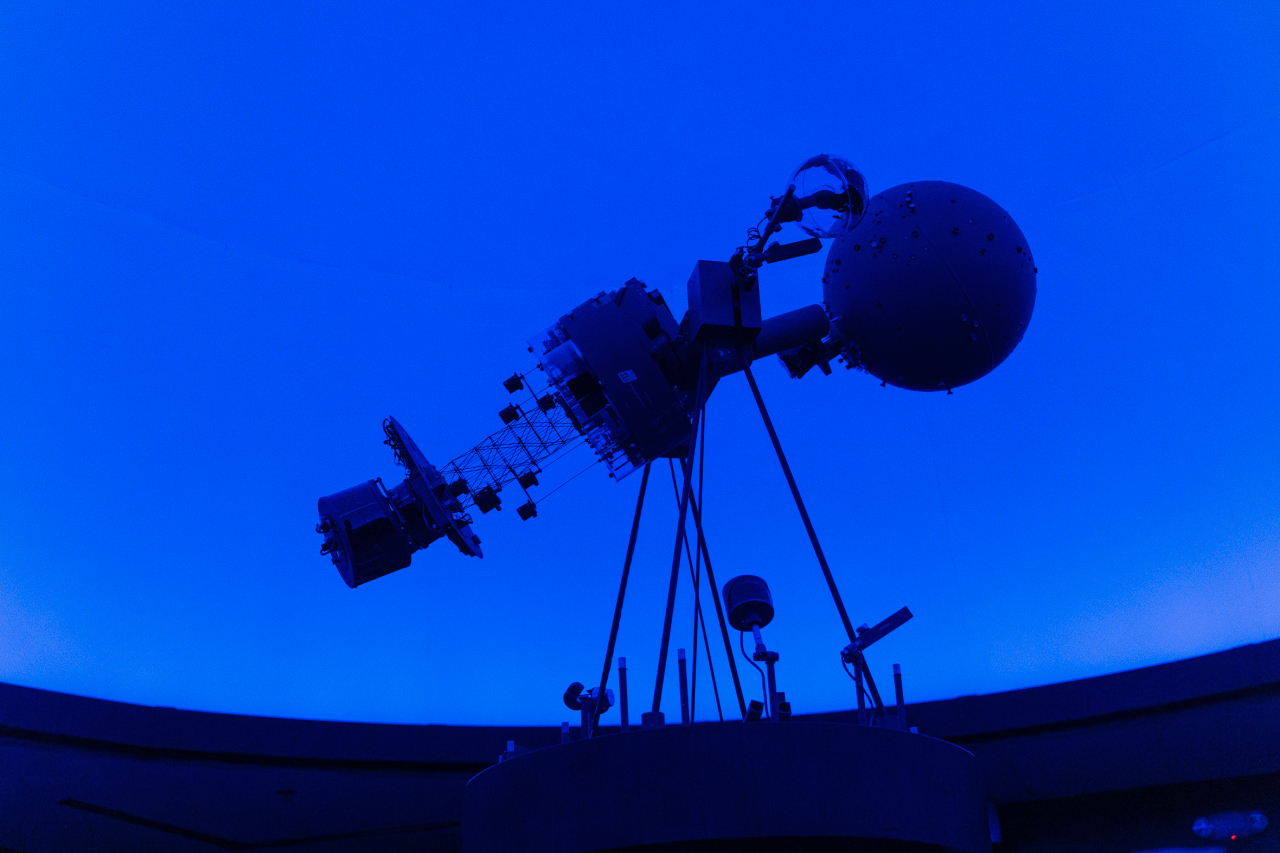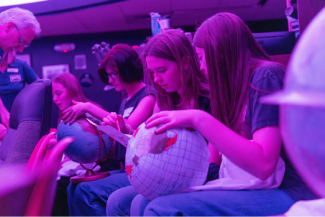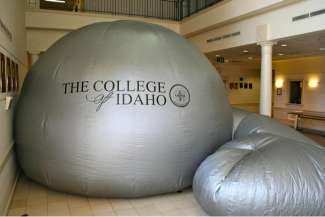The Whittenberger Planetarium has been serving primarily as a public outreach facility since 1970. It is the annual destination of thousands of people throughout the Treasure Valley and beyond. Programs are provided to school and home-school groups, scouts, the public, college classes, and more. We extended our outreach in the early 1990s with the purchase of a portable planetarium that is rented by schools and organizations throughout southwestern Idaho, central Oregon, and Nevada.
The Planetarium has 41 fixed seats with two spaces for wheelchairs. The projector sits under a 24-foot dome. The projector can show northern and limited southern constellations, all planets visible to the unaided eye, the sun, moon, a few deep space objects, and both nightly and annual motions of all of the above. The sky can be viewed from different locations and times on Earth with several specialized projectors helpful in demonstrating daily and seasonal changes visible in the night sky. A digital overlay and a large collection of images add to the educational opportunities and experiences offered during shows.
The Whittenberger Planetarium can be used effectively as a tool in a variety of disciplines — science (earth science, astronomy), social studies (history, navigation, cultural topics), and English (storytelling, mythology) — and the program can be adjusted to fit your needs/interests. Whittenberger Planetarium hosts a variety of shows and topics this season which are open to the public. View the schedule and make your reservation today!
The Whittenberger Planetarium can be used effectively as a tool in a variety of disciplines — science (earth science, astronomy), social studies (history, navigation, cultural topics), and English (storytelling, mythology) — and the program can be adjusted to fit your needs/interests. Booking and payment for field trip daytime shows are done through the field trip link below. All shows starting after 4:00 p.m. are charged evening rates and will be scheduled individually.
Field Trip Show Times
Rates, room capacity, and accessibility are described below. Evening and Saturday showings are by appointment.
Capacity
Reservation Timeline
All group visits, including payment, must be finalized two weeks before your visit. Failure to pay by 5 p.m. the Friday before your visit will result in the cancellation of your scheduled trip.
Cost
All shows starting after 4:00pm are charged evening rates and will be scheduled individually.
The show begins at the time of reservation and ends at the corresponding end time. We strongly encourage groups to be in their seats and ready to begin promptly at the start of the reserved time. There are no reimbursements for late arrivals and consequently shortened programs.
Daytime (9:00 a.m. – 4:00 p.m. start time)
If you have very specific topics that might require extra planning on our part, please contact us as soon as you have scheduled your group.

The Planetarium hosts a variety of shows each academic year that explores various disciplines — science (earth science, astronomy), social studies (history, navigation, cultural topics), and English (storytelling, mythology).
Purchase Now
The Planetarium can be used effectively as a tool in a variety of disciplines — science (earth science, astronomy), social studies (history, navigation, cultural topics), and English (storytelling, mythology) — and the program can be adjusted to fit your needs/interests.
Schedule Now
The STARLAB portable planetarium equipment is available for rental by outside groups, and the College offers a presenter on a limited basis or training for non-College presenters.
Rent NowLive on Good Morning Idaho, senior reporter Roland Beres was at The College of Idaho in learning more about the Whittenberger Planetarium.
Immerse yourself in educational and entertaining opportunities to learn about astronomy and the night sky. Come gaze at images of stars, planets and other celestial objects and revel in the feeling of being in the universe.